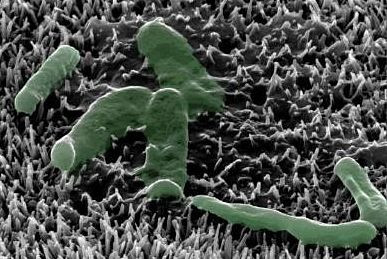Medical devices and implants
The development of ‘smart’ implants may offer a solution to the problem posed by ongoing bacterial infections caused by artificial implants in medicine and dentistry.
What is the problem?
One of the major advances in modern medicine has been the introduction of artificial devices into medical care, including dental and orthopaedic implants and prostheses. Use of such devices has significantly improved patient well-being. However, insertion of these 'foreign' devices into the human body can also be associated with serious complications, of which bacterial infection remains the most common. Despite tremendous improvements in surgical procedures, biomaterials-associated infections remain the dominant cause of implant failure. Prolonged antibiotic treatment is required to manage infections and often revision surgery is required to replace the failed implant (all requiring months of antibiotic treatment and the risk of resistant strains emerging).
What is the solution?
Prof Bo Su (Bristol Dental School) and team are developing bioinspired nanostructured materials (for ‘smart’ implants) which by virtue of their physical/topographical surface, inhibit biofilm formation as observed on cicada and dragonfly wings, preventing infection and negatin the need for antibiotic treatment.
Outcome and next steps
The team are developing a range of 1D and 2D nanostructured surfaces on clinically relevant materials (e.g. titanium and polymers) that exhibit bactericidal properties against a wide range of clinically associated bacteria and, at the same time, promote tissue integration. These novel antimicrobial and tissue-integrative surfaces have the potential to be used in the next generation of biomedical devices and implants possessing inherent antimicrobial function and lasting performance.

Researchers involved
- Prof Bo Su (Biomaterials Engineering Group, Bristol Dental School)
- Dr Wuge Briscoe (School of Chemistry)
- Prof Paul May (School of Chemistry)
- Dr Angela Nobbs (Bristol Dental School)
- Prof Paul Verkade (Wolfson Bioimaging Facility, University of Bristol)
External collaborators
- Prof Wen Jun Zhang (City University of Hong Kong)
- Prof Matt Dalby (Glasgow University)
- Prof Richard Oreffo (University of Southampton)
- Dr Jinju Chen (Newcastle University)
- Dr Max Ryadnov (NPL)
- Prof Carles Mas Moruno (Universitat Politecnica de Catalunya, Spain)
- Dr Diego Pallarola (Universidad Nacional de San Martin, Argentina)
Funding
- EPSRC
- BBSRC
- MRC
- EU H2020
Contact
Prof Bo Su
email: b.su@bristol.ac.uk